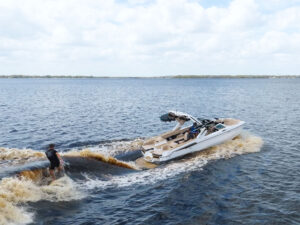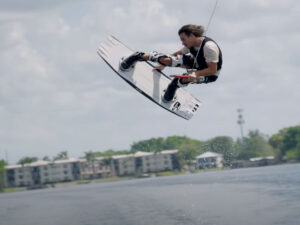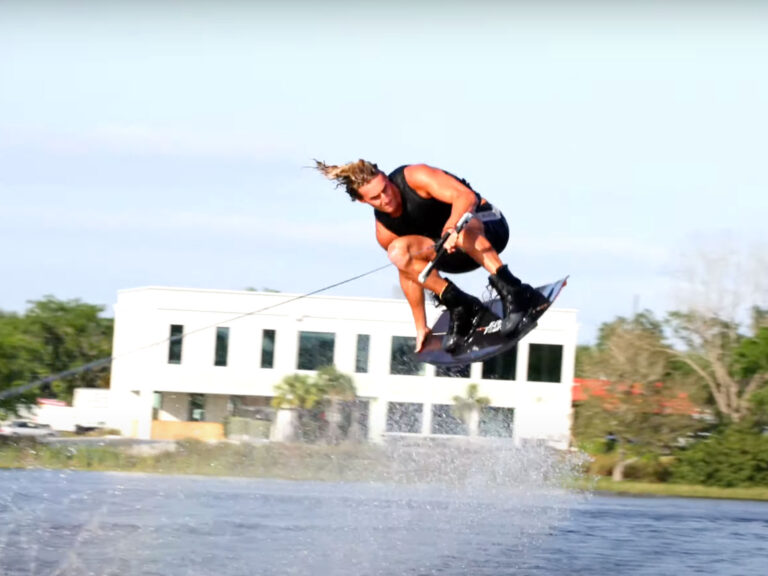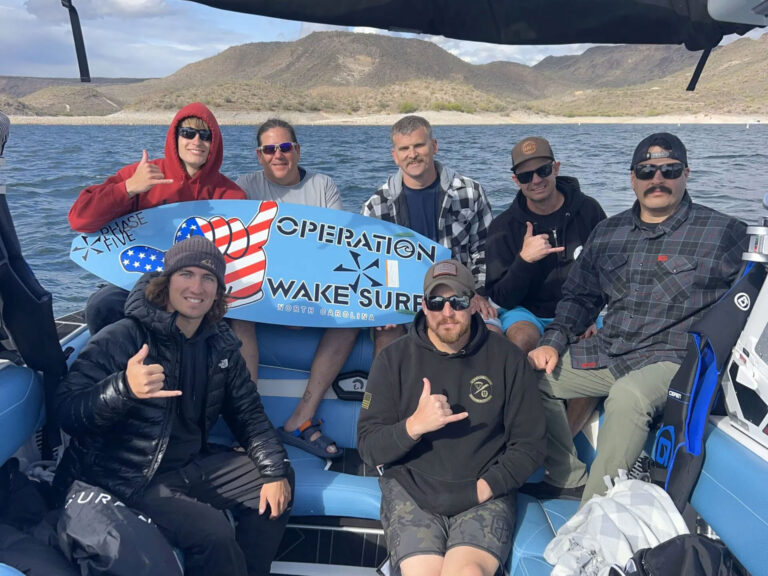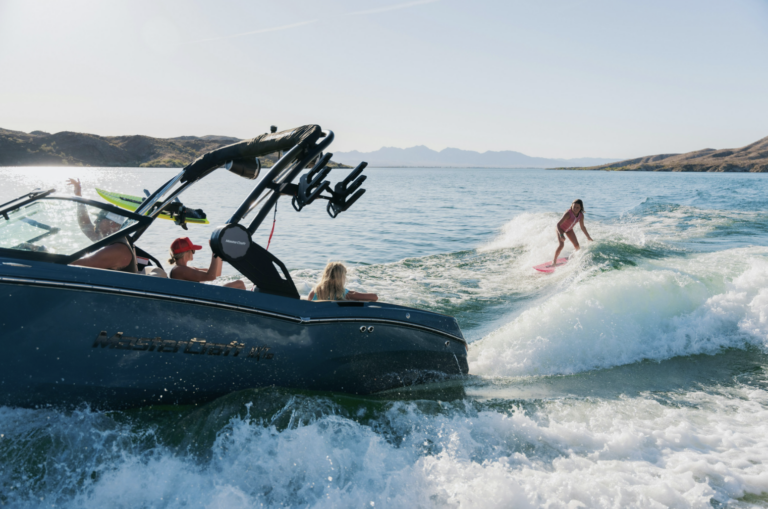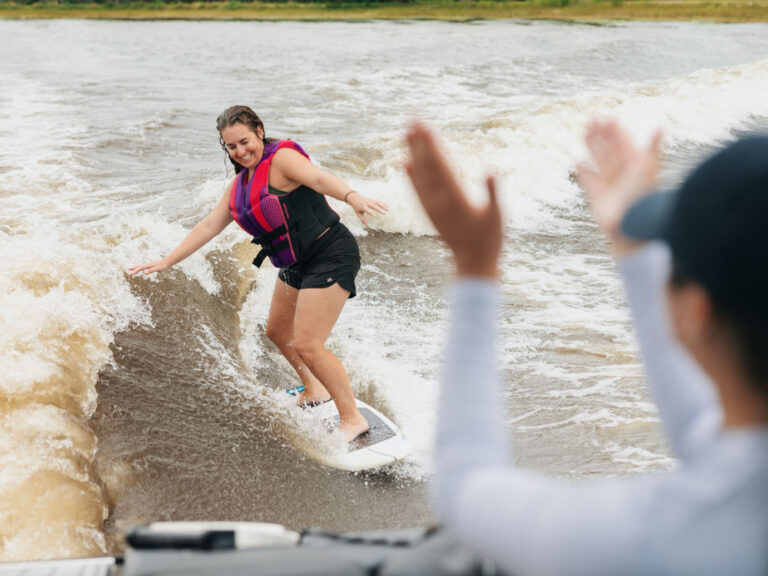We know that all you multi-sport enthusiasts out there are always looking to improve. After all, you’ve got to be dedicated to master all three boat disciplines. Lucky for you, Collin Harrington is good at everything and can catch you up to speed quickly on how to set yourself up for success when attacking these skills behind the boat. Check it out!
How To: Do Everything on Your Lake | Words: Brandon Judd | Photos: Bill Doster
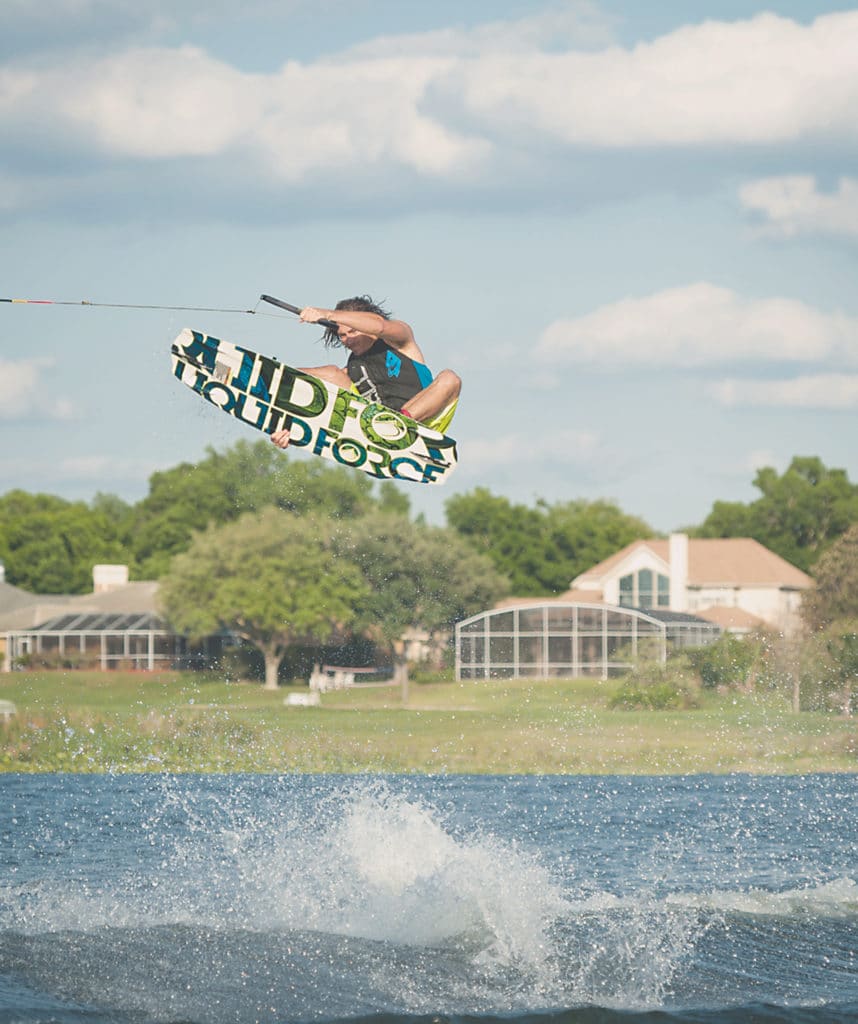
Do It All with Collin Harrington
In this installment of How To, we’ll take a look at how to wakeboard, wakeskate and wakesurf on your home lake. You might say, “Yes, I know it’s possible to do all three of those things on my lake — where are you going with this?” Well, there’s a lot more to it than you might think. We’ve partnered up with wakeboarding’s Renaissance man, Collin Harrington, to shed some light on the subject.
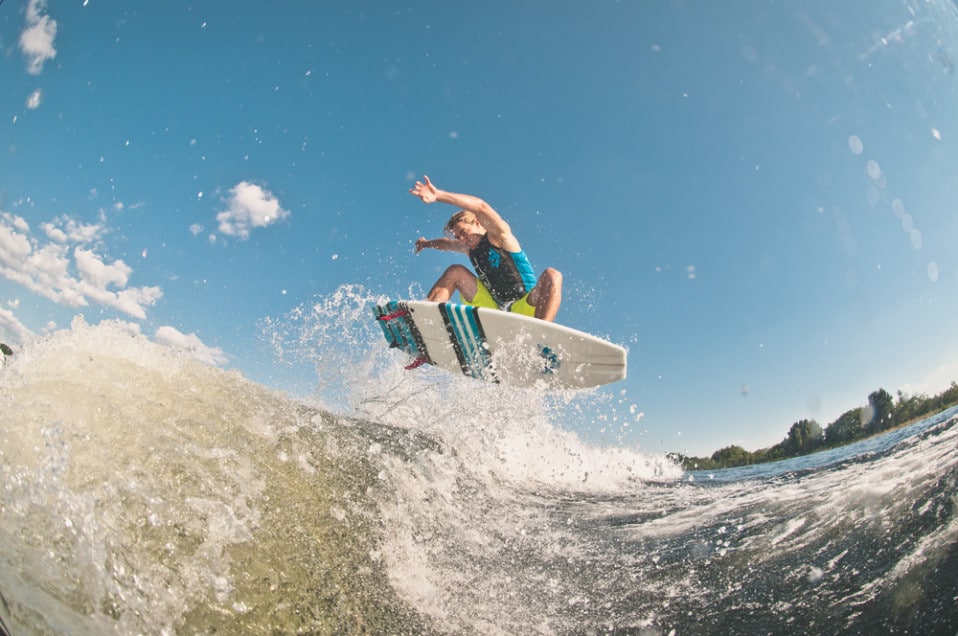
Adaptability
The quest for glassy water can be a constant battle in some regions. Take note as Collin enlightens us on why wakesurfing is the most weather-resistant option. “For me, it keeps things very fresh by having options. If the water is rough or crowded, I will go for a wakesurf, since the choppier water doesn’t bother you as much. Instead of fighting the situation of different environments, I simply like to adapt to the conditions. Work with what you have to work with, and enjoy your time on the water.” Collin goes on to say: “Another personal preference for wakesurfing is the steepness of the wake. I like a steeper wake for popping higher airs, but some prefer less transition for spinning and shuv-it tricks. It’s all about trying it all out and deciding what is best for your riding style.”
Hint: Practicing re-entry ollies first on your wakeboard, followed by your wakeskate, will help you learn how to do airs on a wakesurfer.
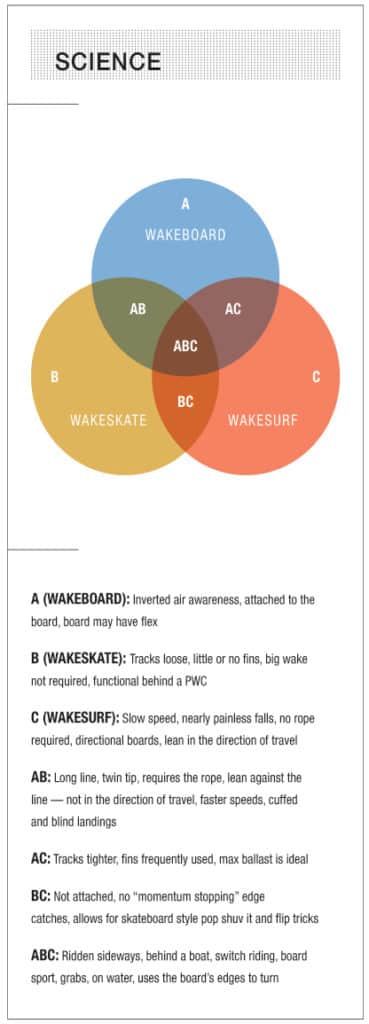
Wakesurf Like Collin
Board: Chase Sixer 4’8″
Stance: Regular
Vessel: Whatever is breaking
Speed: I ride around 12 to 13 mph usually. I enjoy riding much faster than most on a wakesurfer. You can get more forward momentum for bigger airs the faster you go.
Ballast: Maxed Warm-up trick: Smash some lip smacks as hard as I can with the rope in hand every time. I always feel out the wake while holding the rope before I let go.
Click here for WAKESKATING——>
All for One and One for All
All three sports can teach you a lot about the fundamentals present and absent in the others. “For instance, go out on a wakeboard and practice doing re-entry ollies on the wake. This will help you with the feeling of doing airs on a wakesurfer. Practice shuv its on a wakeskate before trying them on a wakesurfer. Get out and try different boards, and you will be very surprised by just how much they benefit each other,” says Collin.
While coaching, I’ve often used a sport other than the one I am actually coaching to highlight a specific principle and help my students reach their goals. For example, if someone is relying on the rope too much when he wakeboards, I’ll have him wakesurf for a set. This usually helps reinforce his trust in his own balance without the rope in the picture, which can often transfer directly back into his wakeboarding.
“It all comes down to board control. Even when I am skateboarding or surfing, I still get the benefit of board control as long as I am riding a type of board. Wakeskating can really benefit edge control on wakeboarding and wakesurfing. My wakeskate has much less traction than my other boards, so it forces me to really use my edges and not depend on the fins to do all the work,” says Collin.
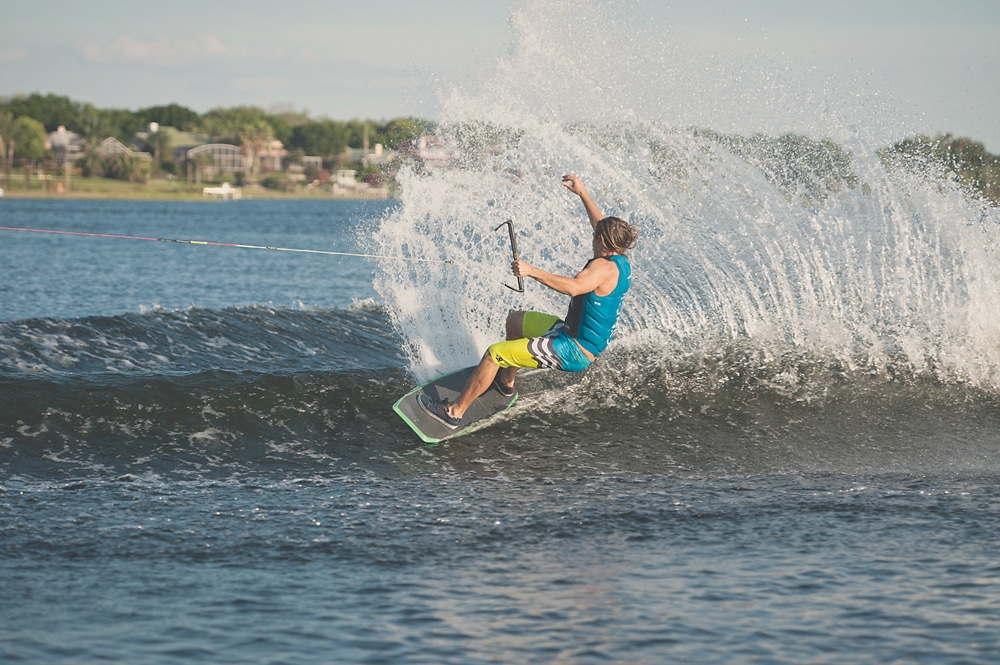
Hint: If you want to learn a particular grab or spin on your wakeskate, master it on your wakeboard first to shorten your learning curve.
Wakeskate Like Collin
Board: Liquid Force Tao 41 inch
Shoes: An old pair of DVS Obscuras
Stance: Regular and narrower than my wakeboard
Vessel: Whatever is available Speed: 21-ish — I wakeskate slower than I wakeboard
Rope Length: 75-ish feet depending on the boat
Ballast: Full Warm-up trick: A couple of carves, some lip ollies and a 3 shuv
Click here for WAKEBOARDING——>
Smooth Operator
To improve your experience on the lake, let’s briefly go over where and how to drive the boat, for wakeboarding and wakeskating specifically. Choose a line where the lake is deep, with a long straight shoreline to follow. The shoreline you choose can really affect the wake and water conditions. The ideal shoreline should be protected from the wind and should absorb rollers rather than bounce them back to you. “Sometimes it’s better to run a little bit choppier line if the seawalls are bad on a calmer line. Backwash rollers are the worst because they can come from all directions,” says Collin.
Depth can also really do a number on your wake. Ten feet seems to be the magic number. Anything much less than that might not only put your prop at risk, but there is not enough water underneath your boat to push back against the hull’s displacement, causing your wake to noticeably shrink.
While driving, be sure to pull the rider in a straight line. If you need to adjust your line, do it in one quick adjustment, creating a kink in your path. Be sure not to make this turn while the rider is in the air or during the approach. This will keep the wake cleaner for longer, allowing the rider to freely connect tricks without interruption.
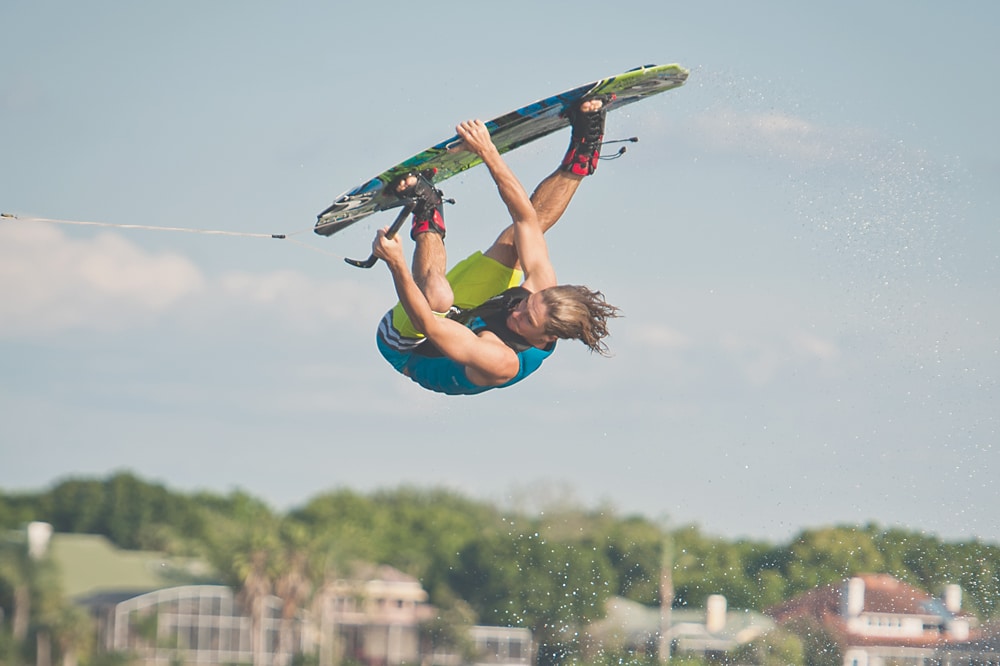
Hint: Learning to carve around switch on your wakeskate will quickly accelerate your switch progress on your wakeboard.
Wakeboard Like Collin
Board: Liquid Force trip 138
Boots: Liquid Force Transit 5-8
Stance: Regular | Left: +12º / -16º | Right: -12º / +16º | all the way out
Vessel: Whatever is available
Speed: It depends on the boat. I like a little faster than most — probably 24-ish.
Rope Length: 80 to 82 feet depending on the boat
Ballast: Full
Warm-up trick: I usually start off every set with a frontside carve off the wake, then a heelside frontside melon 180. I have done that for as long as I can remember. I try to start different sometimes, but it feels weird when I switch it up.
